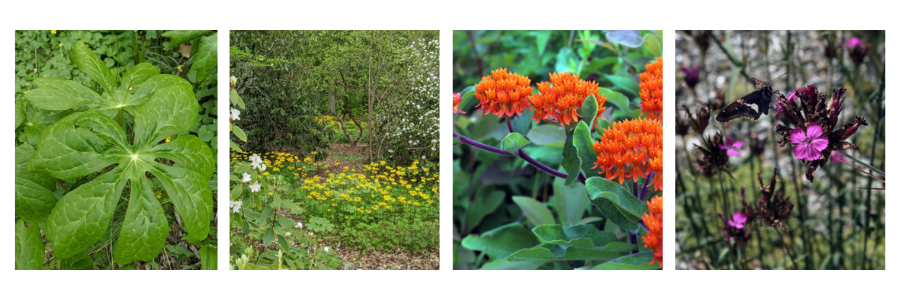Your Plant Sale Game Plan: Step-by-Step Checklist
Set your season – and your garden – up for success!
Spring is upon us and the garden is calling. Maybe you are a new homeowner who recently adopted a landscape that you would like to make your own. Perhaps you’ve gardened for years, but you want to create a peaceful oasis for yourself to enjoy year-round.
Where do you start? It can be overwhelming to look at plant lists or to come to a plant sale and be greeted by rows of plants, all waving their leaves and blossoms at you like little “Pick me! Pick me!” signs.
That’s where your game plan comes in. In this article, you’ll find a downloadable template that you can fill out ahead of time. We’ll go through the process of planning a garden (or adding to an existing garden), so by the time you are standing at our plant sale you’ll know exactly what you’ll need. This will help you learn more about the great plants we have available, and make sure you feel confident that the ones you choose will be the right ones for your garden!
Step 1: Assess Your Site Conditions
Light Levels
- Full Sun: Select sun-loving plants; visit Tyler’s Barn Garden for ideas.
- Part Sun: Explore adaptable plants; check gardens around Tyler’s Visitor Center.
- Full Shade: Choose woodland plants; explore Tyler’s Native Woodland Walk.
Soil Moisture
- Wet Soil: Opt for water-tolerant plants; visit Tyler’s Pond or Rain Garden.
- Well-Drained Soil: Most garden plants thrive here; visit the Barn Garden.
- Dry Soil: Focus on drought-resistant plants; see the Ruin Garden for examples.
Additional Notes
- Record observations about light and moisture in the downloadable template provided.
Step 2: Define Your Garden Goals
Common Goals
- Planting for Pollinators: Include plants like milkweed for monarchs; visit the Pollinator Preserve.
- Planting for Privacy: Consider tall, evergreen plants for screens; observe Tyler’s Visitor Center pathway.
- Low-Maintenance Gardening: Select site-appropriate plants to reduce upkeep; look for ideas in Tyler’s Rhododendron Garden.
View the list of plants to attract hummingbirds.
View the list of plants to attract butterflies.
Goal Setting
- Take a moment to reflect on what you want from your garden (e.g., a reading nook, vegetable patch).
- Write down your specific garden goals in the template.
Step 3: Consider Special Needs
Site-Specific Considerations
- Plants for Slopes: Choose stabilizing plants like catmint or butterfly weed.
- Gardening with Deer: Opt for deer-resistant plants, available on the provided list.
- Native Plant Gardening: Include native species to support local wildlife; check plant descriptions for ‘native’ status.
Record Special Considerations
- Document any unique requirements or challenges in your Game Plan template.
Step 4: Create Your Plant Lists
Design Tips
- Bloom Time: Ensure year-round interest by choosing plants that bloom in different seasons.
- Planting in Odd Numbers: For a natural look, use clumps of odd numbers.
- Repeating Patterns: Use repeating colors and textures for a cohesive design.
Shopping List
- Compile a list of plants based on your site assessment, goals, and special considerations.
Final Tips
- Enjoy the process! Gardens evolve and so will your understanding and preferences.
- Download and fill out the garden planning template to organize your information and shopping list.
This checklist simplifies your garden planning process and prepares you for a successful plant sale experience. Enjoy creating a beautiful, thriving garden that meets your needs and aspirations!


